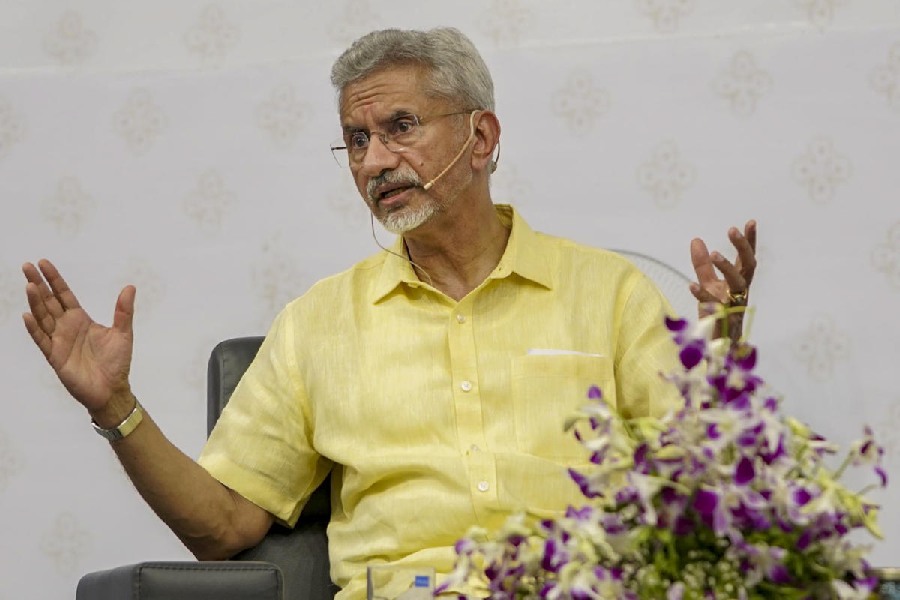 |
| FOR SALE: Sample advertisements in classified columns down the years (Graphic: M. Iqbal Shaikh) |
Those 24 words, squeezed into small print, don?t say much ? but in the weird world of matrimonial advertisements, nothing, clearly, is what it seems. What is clear is that the three-liners, grouped under columns that showcase prospective grooms and brides, inspire passions. Feminists hate them for commodifying women, worried parents find solace in them, and for those who are neither, the ads are sometimes the next best thing to joke books. ?Pretty?, you know, may mean ?fair-skinned, never mind the mug? and ?convent background? translates mostly into ?can speak English to save his/her life?.
For the Centre for Social Research (CSR), however, it?s no laughing matter. The non-governmental agency has studied and widened the scope of a four-year-old survey of these advertisements to come up with some very interesting findings. CSR?s research shows that society has undergone a sea change in the last 50 years, and advertisements are the best indicators of these changes.
?CSR has done a lot of work in the field of women and dowry-related issues,? says Ranjana Kumari, the director of the Delhi-based NGO. ?We found that a detailed study of matrimonial advertisements would help us track down the changing context of Indian marriages, and therefore identify some problems that women run into after marriage,? she explains. CSR?s research involves a decade-wise study of Brides Wanted and Grooms Wanted columns using a sample of 3,200 ads chosen at random from two Delhi-based national dailies.
The findings are, needless to say, eye-opening. A break-up shows that certain perfectly acceptable ways of getting your marriage arranged in the Sixties have given way to more aggressive, specifics-conscious brides and grooms of the new millennium. In the Sixties, no one would ask for photographs of the bride, as this was considered indecent. The post-2000 prospects have no such qualms. As physical attributes gain tremendous importance elsewhere ? in commercials, films and even in the music industry ? the survey finds a ?significant? increase in the number of people demanding photographs of the brides (but not the grooms).
One very strange fact is that there is also an increasing demand for horoscopes and ?homely? bahus. The reason could be K-serials or, as mentioned in the survey, ?risk reduction in an increasingly uncertain world?. In the case of grooms, tall is the buzzword, though salaries are a grey area. While it?s considered crass to state exactly the kind of money the groom should make, ?only sons? have a better chance of marriage, at least in the arranged market.
Specific changes decade-wise show what is hot and what isn?t. For grooms, the Sixties were an age when caste was a prominent attribute. Since a lot of grooms were students then, ?bright futures? also found place in the marriage market, and ?foreign-trained? was a qualification proudly mentioned. An income tax assessee was a mark of distinction. In the Seventies, income and caste were still what made a great groom. Height suddenly became desirable. The Seventies were also the decade of the Non-Resident Indian (NRI), with marriage ads clearly mentioning where the bride would have to live after the wedding.
The Eighties, in turn, were the verbose age. Men started laying stress on their background and family, including where they came from and where they wanted to settle down. Groom-hunting patterns showed a distinct change in the Nineties. Professional qualifications were in, education was out. Job profiles were highlighted, income statements were not. Geographical locations were more important than decent marriages. Individual preferences were a priority. Everything from ?teetotaller? to ?broad-minded? was sought.
For brides, things were very different, and not always for the better. The Sixties were the golden era in which, apart from the usual caste and family, a girl?s merits were the prime concern and beauty was measured more in terms of talent than physical attributes. In fact, only two ads among those surveyed said they wanted ?slim? brides. The Seventies ? with rock ?? roll and extended flower power ? needed smart, convent-educated girls. There was also an emergence of the working woman. In the Eighties, physical beauty was becoming as important as accomplishments were not. Income, however, was a virtue to be flaunted.
According to the survey, the Nineties had become an era of the ?instant fix?, a trend seen to this day. Professionally qualified, physically perfect ladies who may or may not be ?pretty? may have been what the real woman of the age was, but in matrimonial columns, the domesticated bahu chosen through a matching of horoscopes was what ruled the roost as did the Miss India-inspired notions of physical perfection.
Not exactly what many would call progress, but at the end of it all is a lifetime commitment. A few words are hardly enough to know anything about anyone. But who would?ve thought they could inspire sociological theories? Agencies like CSR have proved that matrimonial ads are not just words clubbed under Brides and Grooms Wanted, they?re a mirror of society, and if paid attention to, could make people?s lives a lot better.










